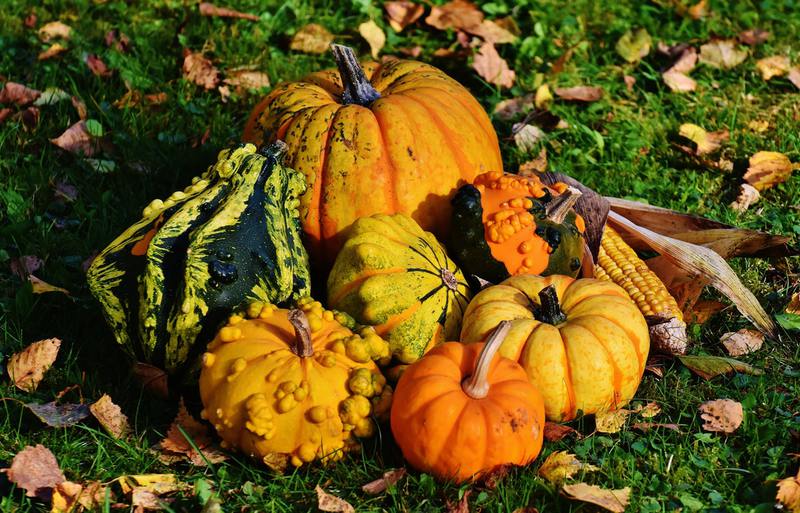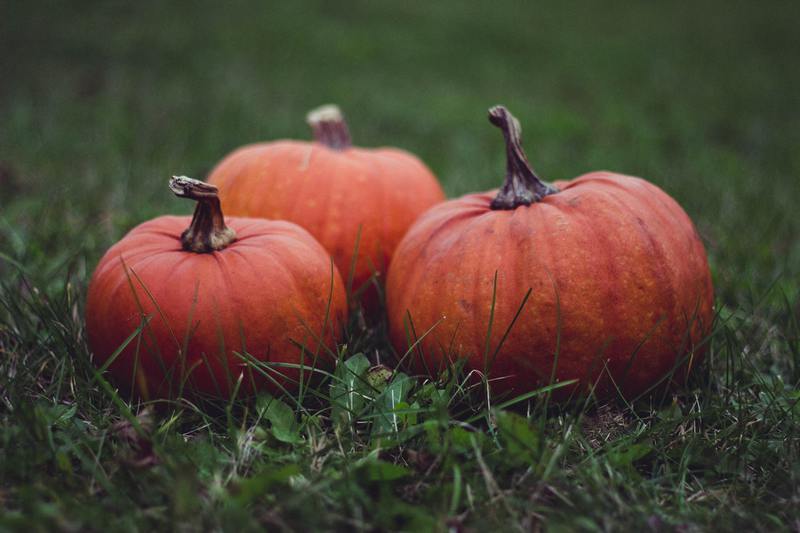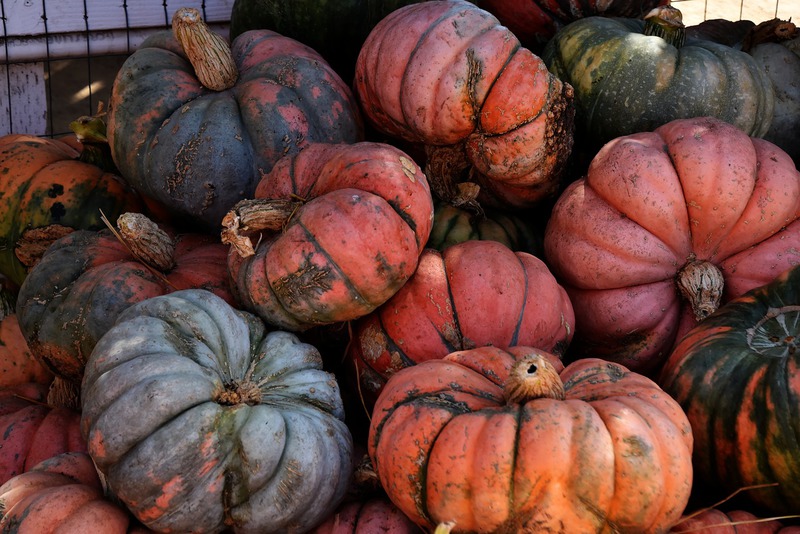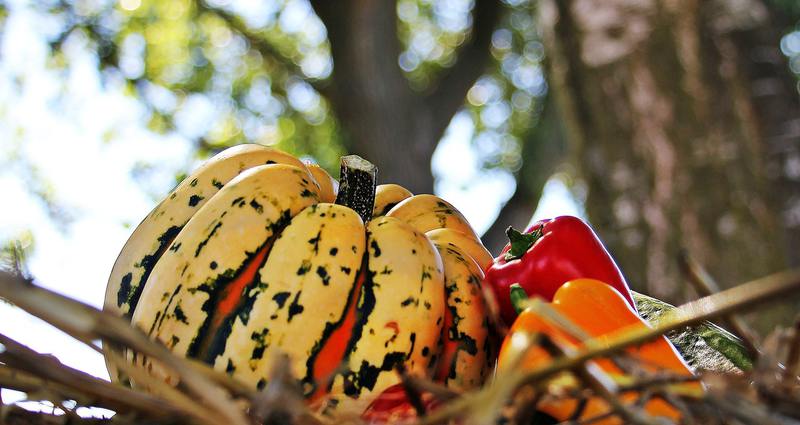Varieties of Pumpkins in Landscaping
Varieties of Pumpkins in Landscaping
October is a wonderful time of year for the weather and your landscaping. We are going to be discussing one of the best plants for the season, and how you can incorporate it into your landscaping for some extra fall flair.
There are wide variety of different types of pumpkins, and different varieties are good for different things. First, let’s talk about the different kinds and which is right for you.
Types of Pumpkins

When it comes to decorating with pumpkins, there are many different features to keep in mind. You have so many more choices than you may think.
To decide what you are going to like best, here are a few pumpkin qualities to keep in mind while looking through the different varieties.
The flesh of the pumpkin is important to think about, in case you want to carve and/or cook the insides to eat. There is a lot of variety when it comes to the skin as well – you can find pumpkins in countless colors, and textures.
When it comes to how the pumpkin looks, you should also keep its size and shape in mind too. The possibilities are endless!
Lastly, make sure you know how long you plan on keeping your pumpkins on display. Some have a longer shelf life than others, and some varieties are only good for a short amount of time.
Now let’s take a look at some of the types that are available.
Traditional Red/Orange Pumpkins

If you really love the look of the traditional orange pumpkins, there are several varieties you can consider for your landscaping.
Cinderella pumpkins are a very popular pumpkin because they have such a bright color, a flatter but round shape, and a nice name. They are edible pumpkins that are very moist and semi-sweet, making them perfect for pumpkin pies.
These pumpkins have deep ribbing (the vertical lines around the fruit), and because of their more flattened shape, look great stacked on top of each other or sitting on your porch.
Lakota pumpkins are another great choice if you want a brightly colored option. These pumpkins are red with black and green markings on them. They are usually the shape of a pear, and have very light ribbing. Lakota pumpkins are fairly small as well, they only weigh around 5 to 7 pounds.
These are edible as well! They have a delicious flavor for soups and savory foods that almost tastes like a butternut squash.
Blue Pumpkins

Now let’s take a look at some of the less “warm” varieties. These pumpkins are usually shades of blue that give your fall landscaping a pretty unique look.
A Blue Lakota pumpkin is a nice mix of blue and green with slight ribbing. It has an almost cone-like shape and is from the midwest.
Kabochas are actually a squash that looks exactly like a green pumpkin. It has several different names including Ebisu, Japanese Pumpkin, Hoka, Delica, and Hokkaido Pumpkin. This is a very popular choice in Japan. It has tough, green skin with yellow flesh, and will retain its shape even after being cooked. The squash has a rounded and irregular shaped body as well.
Another Japanese pumpkin is the Kakai . It is a grey variety with orange stripes along the ribbing. Fairly small, they only weigh around 5 to 8 pounds and they are easy to carve. While people don’t usually purchase them for eating, they have gorgeous blue seeds that you can roast.
The last blue pumpkin we are going to talk about is the Jarrahdale . This pumpkin is a cross between a Blue Hubbard and a Cinderella pumpkin. It is flat but round, has light blue-grey skin, deeply ribbed, and has golden flesh that is delicious to cook and eat.
Big Pumpkins

The last type of pumpkin we are going to discuss are the absolutely massive ones. These are the types of pumpkins that you would see win prizes at fairs, and if you have a big enough space, they can look really neat in your landscaping.
These types do have a downside however. Carving and eating them isn’t really common or much of an option. They lack most of the flavor that the smaller varieties have, and it would be a massive chore to empty and carve them.
Some of these massive pumpkin varieties include Big Max , Big Moon , Atlantic Giant , and Musquee de Provence .
What Should I Do With My Pumpkins?

So once you have chosen the type or types of pumpkins that you want to use in your decorations this fall, how should you use them in your landscaping?
One fairly common way people incorporate pumpkins is on their front or back porches, or down the stairs of their front deck. This is a great way to keep the pumpkins in your view and avoid having them eaten by some critters.
If you have flower beds or areas of your garden that are fairly empty in the fall months, these can be great place holders for pumpkins as well. We also really love making an arrangement of them around a mailbox too.
We hope you were able to find your dream pumpkins in our guide! Which one are you the most excited to try in your fall decor this year?


